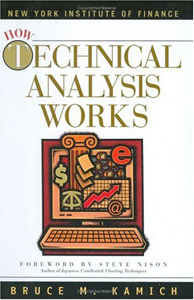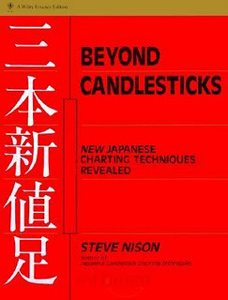Glossary of Stock Trading and Investment Terminology
Iron ore refers to the minerals and rocks from which iron can be extracted. Iron ore is considered as one of the most important raw materials for the steel industry along with coking coal. It is to be mentioned that equal amount of coking coal and iron ore is needed to produce steel.
Iron Ore: A brief Market Overview
SMA's or Separately Managed Accounts are those accounts that are managed professionally, offering certain benefits over the managed funds. In case of an SMA, the securities remain visible as well as portable as if the securities were bought directly. In addition to this, you will hold the ownership of the underlying shares and not only the units in a fund. This means that you will be able to manage your tax position more efficiently and won’t have to cop the accrued capital gains which often turn out to be a part of the unit price as far as managed funds are concerned.
Placing "stop loss" in case of trading CFDs is a very common practice followed by most of the professional traders. Stop Loss is a type of order that a trader places with his/her broker under which instructions are given to sell a security when it hits a certain price. Stop loss is an option that traders use to minimize their loss on a security position.
Say for example, Mr. X has bought share CFDs on ABC Ltd. at the rate of $50 and placed stop loss at $45. Now this means that Mr. X will be tossed out of the trade automatically in case ABC goes down to $45.
Fundamental analysis is a technique of estimating the future returns from the stocks of a company by analysing its financial statements, market share, competency of management, competitive advantage and many other factors. In order to forecast an accurate return in future, fundamental analysis considers the current as well as historic data.
When it comes to fundamental analysis of a company, there are two types of fundamental factors a trader needs to take under consideration:
- the quantitative factors; and
- the qualitative factors
Buy and Hold is a long term investment strategy where shares are bought then held, usually for many years. Day trading is the inverse of buy and hold. In buy and hold, shares are held on the assumption that stock prices will go up in the long run (capitalist economies expand, so stock prices rise as well).
The term “Ask” is widely used throughout the trading industry which refers to the price at which a seller offers currency, futures, stocks, CFDs or options. Some other synonymous terms includes: asking price, asked price, offering price, offer and ask price.
Relation Between Ask and Bid
A buy back (also buyback) is buying what had previously been sold or given away. It is offsetting purchase to liquidate a short sale. You initiate a buyback by making offers to investors or making transactions on the open market over a period of time. When a buyback is done, the share of stock owned by a company is increased as well as the earnings per share, and thus market value.
When you average up, you buy equal numbers of shares at higher prices than previous purchases. As a result, the average price per share increases as well as investor stock size. The overall cost basis is lowered. For example, if an investor buys an equal number of shares at $10, $20, $25 and $35, the average cost basis will be $22.50.
The rate of return from the dividend payments after taking the benefits of imputation credits (also known as franking credits) to the investors in account is measured through grossing up the dividend.
In the past, dividend yields were quoted by dividing the dividend of the full year in cents per share by the market price in cents per share. This way, the result could be compared very easily and accurately with the yields generated by the other type/form of investments.
Average daily volume (ADTV) describes the number of shares traded during the day. To come up with average daily volume, divide the annual volume by the total number of working days in the year. ADTV is used to determine changes in trading patterns. In general, low ADTV stocks usually sell at low prices while high ADTV stocks are stable.
- How to Trade Forex and Gold Options
- How to Trade the Gold Price and Profit!
- Forex Trading the EUR/USD Pair € EURO and $ US Dollar
- How to Trade Stock Market Indices S&P500
- How to Trade Crude Oil
- Forex Trading Psychology
- What Are Broker Recommendations?
- Free Tickets to Trading & Investing Seminar & Expo ($18) Brisbane 2013
- Stock Calc App
- All About Warrants
- Introduction to Exchange Traded Funds
- Introduction to Exchange Traded Funds: Features
- Introduction to Exchange Traded Funds: Domestic ETFs
- Introduction to Exchange Traded Funds: International ETFs
- Exchange Traded Commodities
- Australian Stock Scan
- Australian Online Share Trading
- List of Trading Books
- Interesting Thoughts about the Australian Dollar
- What's the Meaning of Hawkish?
- Do You Know How To Use the P/E Ratio
- Trading, Religion and Politics - Do They Have Anything in Common?
- Shares that are Volatile that Double and Half in the Short Term
- Telstra (TLS) T3
- Margin Call by E-mail
- The Cost of Holding a Position
- Lack of Disclosure: Compensation from ASX Listed Company
- Unrealistic Returns and Benchmarks
- CMC Markets Down
- Quality versus Quantity Forex Trading
- Woolworths 1H Sales $30.7bn up 3.2%
Date added 31-01-2013 - ASIC Fines CommBank's CommSec
Date added 25-09-2012 - Industry Super Network Calls to Ban High Frequency Trading (HFT)
Date added 22-09-2012 - NAB Launches Online Share Trading Platform
Date added 19-09-2012 - Reserve Bank of Australia Says 23 Countries Holding AUD
Date added 18-09-2012 - Australia Post Digital Mailbox
Date added 10-09-2012 - Winners and Losers of Trading for Week 2
Date added 16-01-2012 - 2012's First Week of the Best and Worst Traded Stocks
Date added 09-01-2012 - 2011's Last Best and Worst Traded Stocks
Date added 05-01-2012 - Best and Worst Pre-Christmas Traded Stocks
Date added 30-12-2011 - Trading Winners and Losers for Dec. 12-16
Date added 19-12-2011 - Best and Worst Traded Stocks for Dec. 5-9
Date added 13-12-2011 - Top 3 Best and Worst Traded Stocks
Date added 05-12-2011 - ASX Glitch Trading Halt
Date added 27-10-2011 - Worst Trade Stocks (and the Best)
Date added 06-08-2011
Top 150 Public Companies Listed on the Australian Stockmarket as at 29/05/2009
- BHP Billiton
- Westpac Banking Corporation (WBC)
- Commonwealth Bank of Australia (CBA)
- National Australia Bank (NAB)
- Telstra (TLS)
- ANZ
- News Corporation (NWS)
- Woolworths Limited(WOW)
- Woodside Petroleum Limited (WPL)
- Rio Tinto
- Westfield Group (WDC)
- Westfarmers Limited (WES)
- QBE Insurance
- CSL
- Newcrest Mining Limited (NCM)
- Origin Energy Limited (ORG)
- Santos Limited (STO)
- AMP Limited (AMP)
- Macquarie Group (MQG)
- Foster’s Group Limited (FGL)



